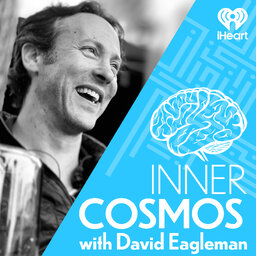Ep31 "Why do we see #TheDress differently?"
Why can you hear some sounds two different ways, depending on which word you’re looking at? Why do electrical outlets sometimes look like a face? How can you have rich visual experience with your eyes closed? Are some crosswalk buttons fake? Why are some pictures interpretable only once you’ve been told what to look for? And although brains are often celebrated for their parallel processing, what should they really be celebrated for? Tune in to learn what happens when the raw facts of the world collide with your expectations.
 Inner Cosmos with David Eagleman
Inner Cosmos with David Eagleman


